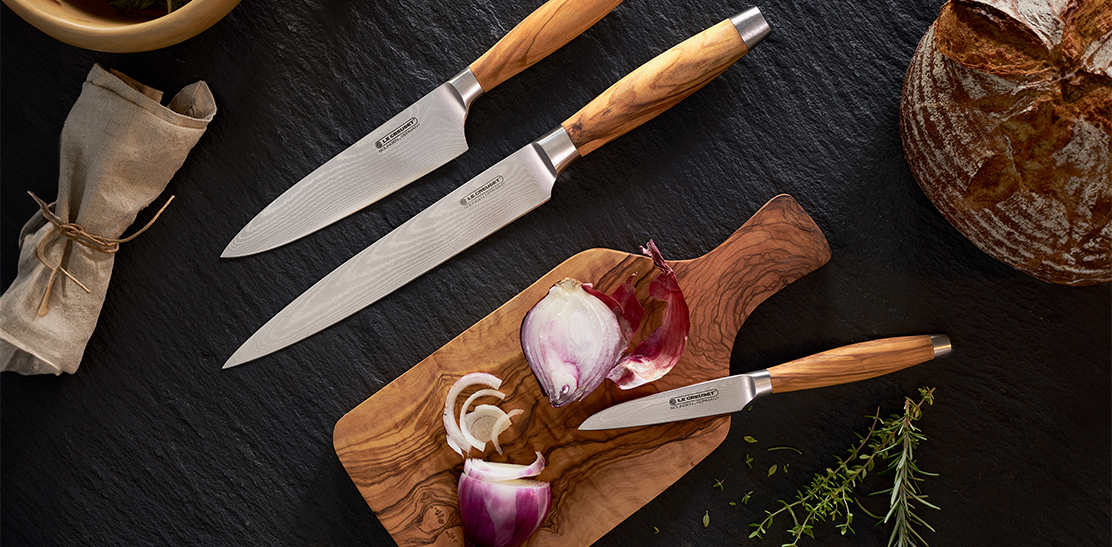
There is nothing more important in the kitchen than knowing how to slice and dice with confidence. From chopping an onion to mincing garlic, mastering a few basic knife techniques can not only simplify meal prep but is also a great way to impress guests while cooking.
The first step to sharpening your knife skills is choosing the right tools for the task. That’s why Le Creuset offers a range of knives, all built with premium materials and designed to withstand daily use.
From our versatile Chef and Santoku Knives to our Paring and Bread Knives, we have all you need to master basic chopping skills, as well as more advanced knife techniques. This guide equips you with the knowledge and confidence you need to slice, dice, and chop your way to culinary excellence.
Eight Knife Techniques to Learn & Master
While there are almost as many knife techniques as there are ingredients to cut, there are eight essential ones that any home chef can master. From fresh produce to raw meats, these eight fundamental knife techniques will prepare you for most recipes.
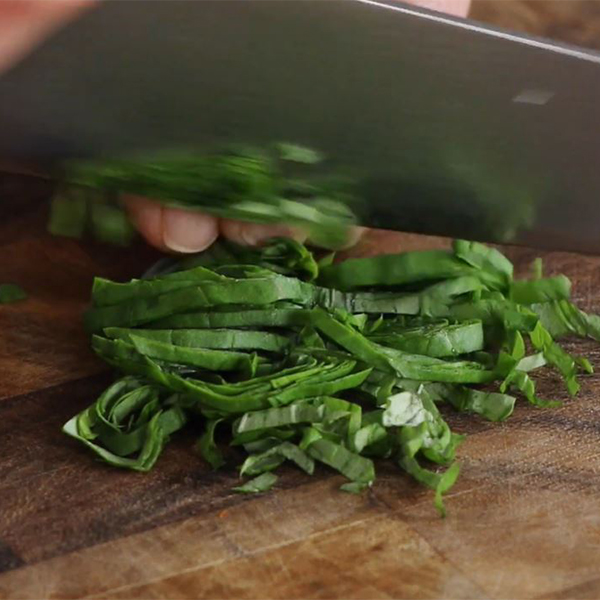
How to Cut Fresh Herbs
Working fresh herbs into everyday meal preparation not only introduces a depth flavour but is also a great way to expand your palate, elevating dishes to a new level of sophistication. From learning how to make a chiffonade to a bouquet garni, fresh herbs are the foundation of countless delicious meals.
Making chiffonade is as simple as gathering a stack of fresh herbs like basil or mint and rolling them into a tight log. With the help of a Chef’s Knife, slice the roll thinly to produce delicate ribbons of flavour and freshness.
Preparing a bouquet of garni is equally as simple. Begin by bundling fresh herbs like thyme, parsley, and bay leaves in a cheesecloth or leek greens, tie it securely, and drop it into your simmering soups or stews for a burst of aromatic flavour.
Watch our quick how-to video and learn how to cook with fresh herbs today!
Learn more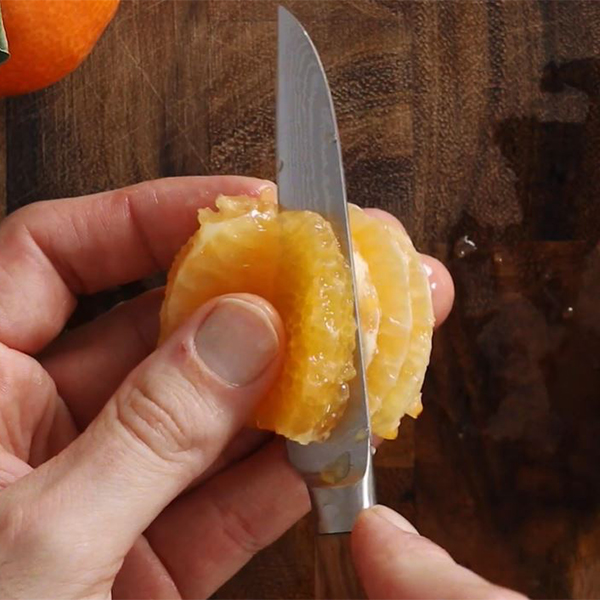
How to Segment a Citrus Fruit
Segmenting a citrus fruit makes for a great way to reconnect with the simple joys of cooking, all the while adding unmatched freshness to your culinary masterpieces. Best of all, the process is easy to follow. Start by trimming both ends of the fruit before removing the peel and pith. Once you have exposed the fruit, carefully slice between the membranes to release even segments.
Our Paring Knife is the only kitchen tool needed to practice this technique, offering precision and control at every turn. This small, short-bladed knife is designed to get into the crevices of ingredients such as citrus fruits, making it the ultimate companion when preparing salads or decorating desserts.
Watch our how-to video here to get started with segmenting citrus fruits!
Learn more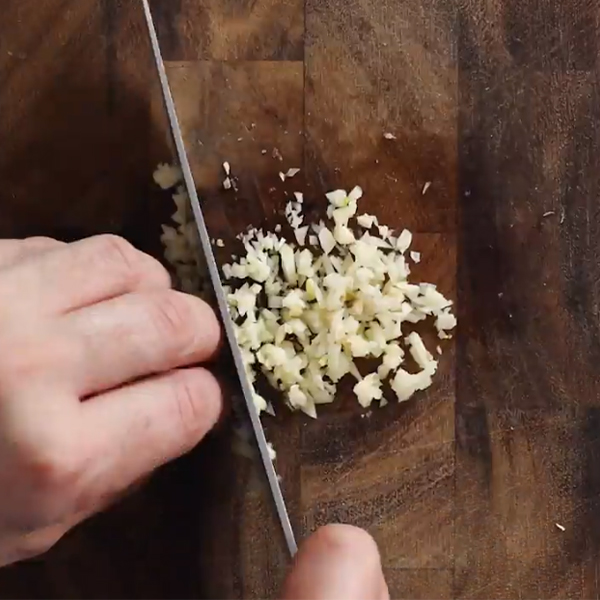
How to Mince
Mastering the art of mincing ingredients is a fundamental culinary skill that opens the door to enhancing flavours, achieving optimal texture, and elevating the overall presentation of your dishes. Common ingredients you can mince include but are not limited to, garlic, onions, ginger, herbs like parsley and cilantro, and vegetables such as carrots, celery, and bell peppers. The minced ingredients can then be combined into a sauce, marinade, vinaigrette or sauté.
To achieve minced garlic, place your Chef's Knife on its side over a fresh clove of garlic and gently use the palm of your hand to press down on the knife, cracking the clove and making it easy to peel. Featuring a curved blade, our Chef’s Knives deliver the rocking motion required for effortless mincing.
Before you start mincing, watch this quick video, breaking down this essential knife technique.
Learn more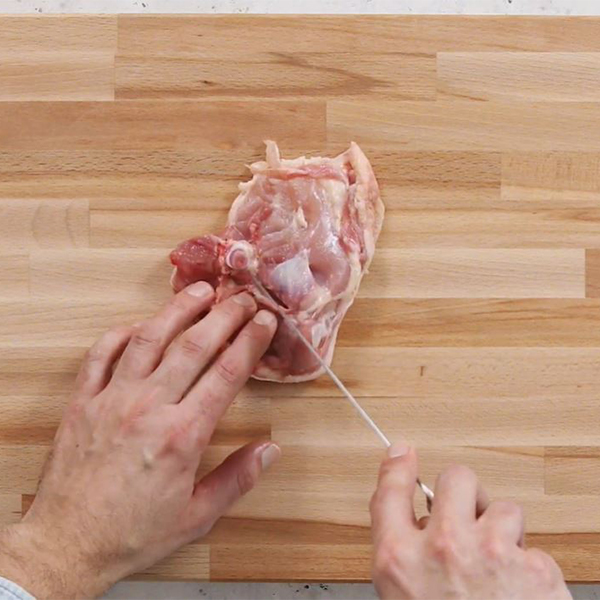
How to Debone a Chicken Thigh
Knowing how to debone a chicken thigh is essential for when you can't find boneless chicken thighs at the grocery store. The first step is locating the thigh bone before cutting alongside it in short bursts. From there, cut along each side of the bone with your Carving Knife. This versatile kitchen tool offers superior precision and control for a smooth, clean cut thanks to its long, thin blade.
Gently glide the Carving Knife beneath the bone, separating it from the flesh, and proceed to trim both ends to completely remove it. Be sure to save the leftover chicken bones for making a stock, once all the cartilage has been removed.
Here’s how to debone a chicken thigh with the utmost precision and care.
Learn more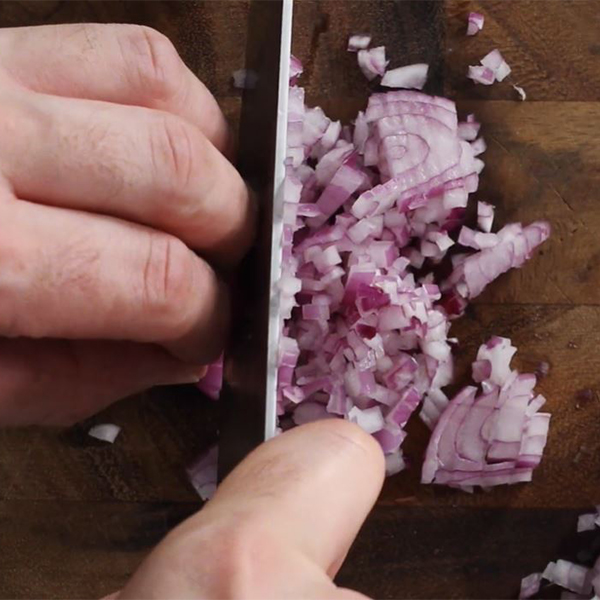
How to Cut Onions and Shallots
The way onions and shallots can be cut is typically dependent on the recipe and dish you are preparing. In any case, our versatile and ever-dependable Chef’s Knife has you covered. To begin, make sure you have your ingredients, a sharp Chef's Knife, and a stable cutting board ready at your workstation.
Start by slicing off the root end and the top (stem end) of the onion or shallot with your knife, before gently peeling away the dry, papery skin layers. Next, halve the onion or shallot vertically, from top to bottom, so you have two equal halves. Finally, lay each half flat on the cutting board and proceed to make the desired cuts, whether it is thin slices, diced pieces, or finely minced bits.
Master this essential knife technique and learn how to cut onions and shallots with ease thanks to our video.
Learn more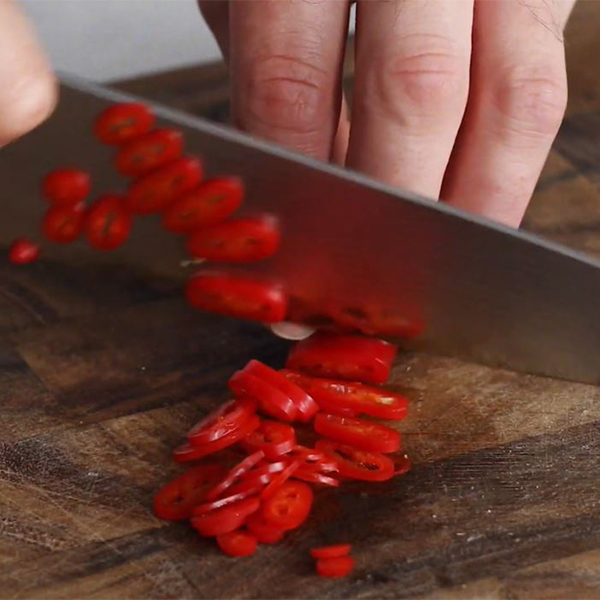
How to Chop a Chili Pepper
Learning how to expertly chop a chili pepper can elevate traditional meal preparation in more ways than one. For one, precise chopping results in even distribution of spice level and flavour for a more balanced dish.
Begin by removing the pepper's stem and gently rolling it between your palms to release the seeds, diminishing its spiciness. If you prefer heat, keep the seeds in before slicing. For perfectly thin rounds, proceed to slice the pepper crosswise.
To dice a chili pepper, begin by halving it lengthwise and scraping away the inner membrane along with any lingering seeds. Next, slice the pepper into lengthwise strips and gather them before cutting crosswise. If you are unfamiliar with this chopping technique, be sure to watch our detailed how-to video!
Learn more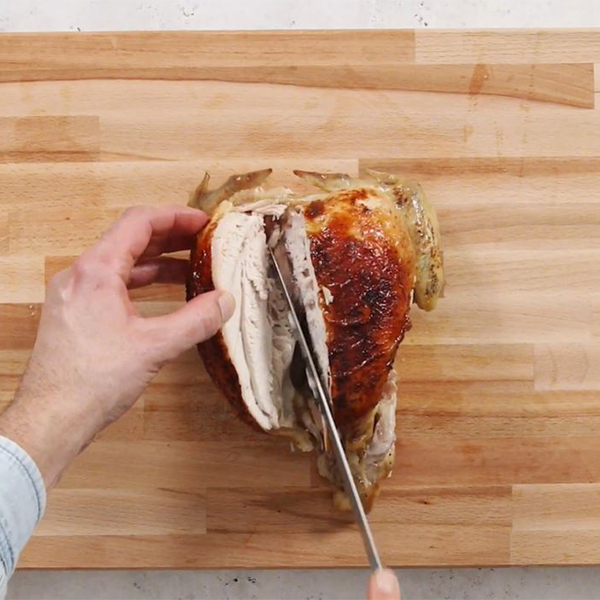
How to Carve a Roast Chicken
Carving a roast chicken requires skillful precision to yield juicy, succulent slices. Our Carving Knives are the ideal kitchen tool needed for this knife technique along with a trusty cutting board.
When carving a roast chicken, start with the legs and begin by gently slicing the skin between the thigh and the breast. Next, proceed to cut through the joint where the leg meets the body. For the breast meat, make an incision along the breastbone, starting from the top and continuing down to where the leg connects to the body. This loosens the meat, creating room for the carving knife to glide diagonally under the breasts, freeing them from the rib cage.
Remember, do not throw out the remaining chicken and carcass. It can be used when crafting homemade stocks and soups. Watch our how-to video on carving a roast chicken.
Learn more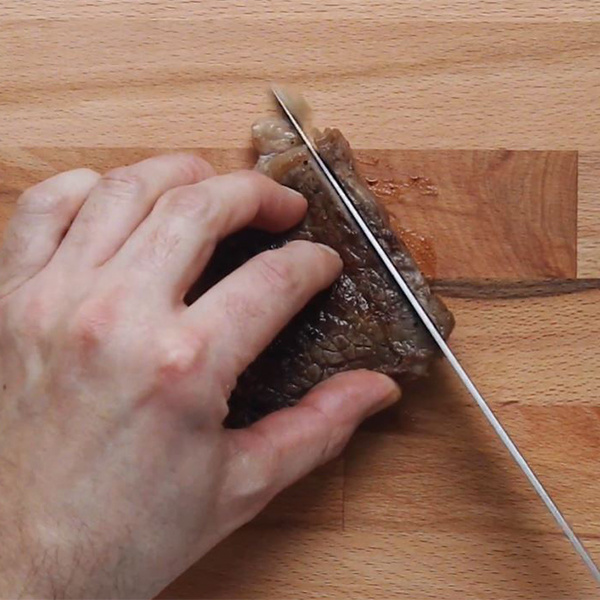
Cutting Against the Grain of Meat
Cutting against the grain of meat is designed to shorten the fiber, resulting in meat that is more tender and easier to chew. As a result, mastering this simple knife technique can help elevate your favourite recipes, including the classic Steak Frites.
Use your index fingers to spread the surface of the meat slightly exposing the cracks to locate the grain, and therefore the direction that the meat fibers run. From there, slice the meat fibers perpendicular. Our Chef’s Knife is recommended for this knife technique. It helps cut against the grain with precision, thanks to its curved blade and the ensuing rocking motion.
Watch our how-to video on cutting against the grain of meat.
Learn moreLe Creuset’s Essential Knives
Le Creuset offers five styles of knives, ranging from the versatile Chef’s Knife all the way to the detail-oriented Paring Knife. Understanding what each of these knives are best suited for will help you both choose which knives you need for your everyday cooking needs.
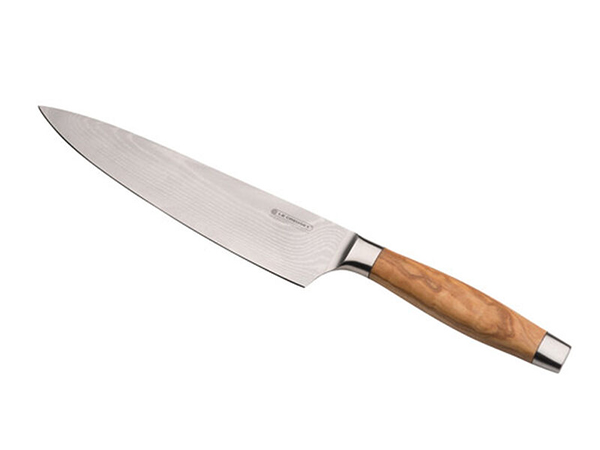
Chef's Knives
Dubbed the chameleon of knives, and for good reason, our Chef’s Knives is perfectly suited for tackling a multitude of everyday kitchen tasks. Equipped with a curved blade and a long pointed tip, our Chef’s Knives have been carefully designed to enable the rocking motion necessary while cutting.
This, in turn, provides superior flexibility and makes our Chef’s Knives resistant to corrosion. From chopping vegetables to slicing fruits and mincing garlic, there is virtually no cut this Chef’s Knife cannot help with.
Be sure to have our Pull Through Knife Sharpener ready and take full advantage of the unprecedented precision for years to come.
Shop now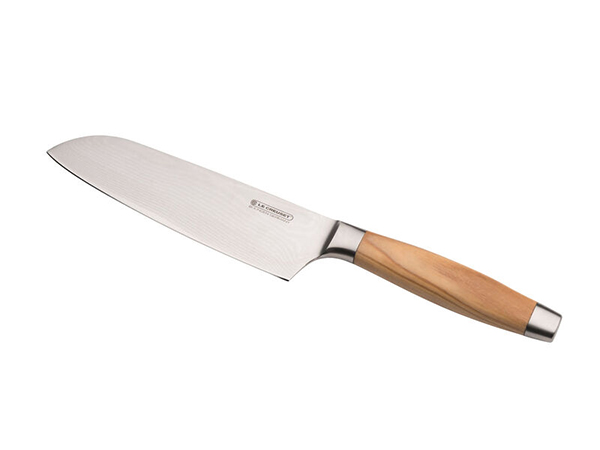
Santoku Knives
Japanese for ‘three virtues’, our Santoku Knives are particularly suited for accomplishing three crucial cuts that form the foundation of everyday meal preparation: chopping, slicing, and dicing. Slightly shorter than the standard Chef’s Knife, this Japanese knife features a straight edge that tapers down. Our Santoku Knives can be used to cut your favourite ingredients, including meat, fish, and vegetables, making for a smart addition to any growing knife collection.
These knives epitomize the buy-it-once-for-life nature of Le Creuset’s products and can be passed down from one generation to the next. Equip your kitchen with a Santoku Knife and enjoy all the benefits of precision and seamless cuts for years to come.
Shop now
Paring Knives
Recipes can at times call for detail-oriented cuts, and that’s where our Paring Knives come in. Designed to get into the crevices of food to skin, seed, and core ingredients, these knives will quickly establish themselves as mainstays in your Le Creuset collection. Our Paring Knives are equally ideal for creating delicious garnishes, as well as cutting and peeling vegetables and fruits. This blade delivers effortless cuts, combining premium materials and expert craftsmanship.
Shop now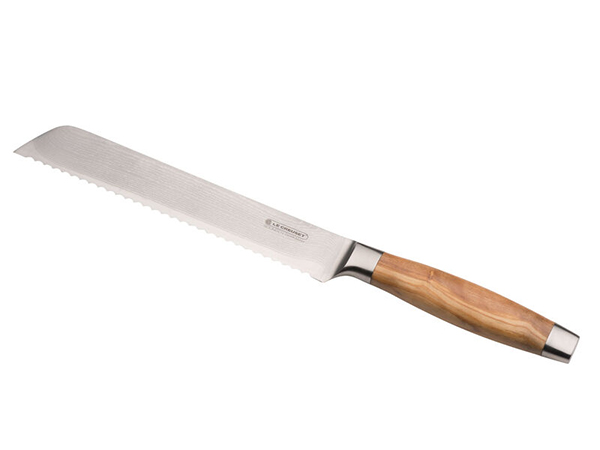
Bread Knives
Breadmaking, in many ways, has become an art, transforming simple ingredients into a diverse array of flavors, textures, and aromas. Slicing through homemade bread can be equally as satisfying, especially if you have Le Creuset’s Bread Knives in your kitchen. Featuring a serrated edge, these knives are designed to cut through the tough exterior of bread without collapsing its delicate interior.
Beyond slicing through bread and sandwiches, our Bread Knives can also be used to cut cake on those special occasions, or slice through a large tomato like beefsteak or heirloom tomatoes. Our Bread Knives embody our commitment to innovation and durability, combining expert craftsmanship and a sleek design.
Shop now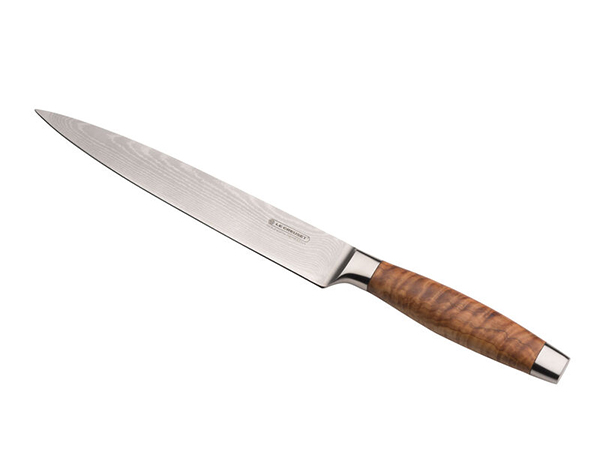
Carving Knives
Carving Knives may just be the unsung hero of knife collections, serving a number of crucial purposes in and around the kitchen. Whether you are hosting friends and family over for the holidays, or preparing a delicious Sunday dinner, these knives are particularly ideal when carving through poultry and roasts with ease.
Our Carving Knives come with a long and narrow blade that ultimately allows for a smooth, clean cut every single time – without the fear of tearing or shredding your culinary creation and hours of work. Protected against corrosion, these knives can become a staple in your family for years to come.
Shop nowMaster Knife Techniques with Le Creuset
Mastering knife techniques will simplify meal preparation, helping you deliver consistent, delicious results every single time. Whether you need precise, uniform cuts for a stew, or need to carve a turkey with ease, these techniques elevate your cooking skills, equipping you with everything you need to become a seasoned home chef.
In our Cooking School series, we break down the most popular cooking, baking and knife techniques with easy-to-follow how-to videos. These techniques will aid with everyday cooking, equipping you with the skills needed to tackle new recipes and dishes of all sizes.
These were just eight of the most commonly used knife techniques. For more inspiration, visit our blog for all the latest product updates, tips and ways to make the most of your Le Creuset knives.
